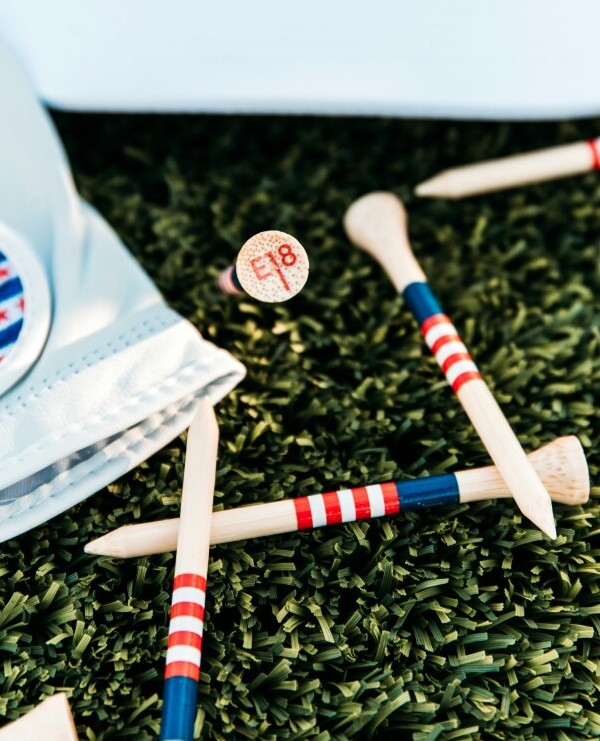What Is Stroke Play In Golf?


Fore! Quick note: a few links here are affiliate links. If you snag gear through them, I earn a small commission — no extra strokes added to your game.
Alright, let’s talk about stroke play. Stroke play is a game format where the player with the fewest total strokes over the course of the entire round wins. Unlike match play, where players compete hole by hole, stroke play is all about your cumulative performance across the round. The golf viking is here to help you understand what stroke play in golf is all about.
Imagine, instead of just trying to beat your buddy on each hole, you have to keep your score low throughout the entire 18 holes. It’s challenging but rewarding because consistency really pays off. Stroke play is the format used in most of the major golf tournaments, like the Masters and the U.S. Open, mainly because it accurately reflects a player’s performance over a longer period.
It’s about perseverance and being consistently low scoring throughout an entire round of golf. Stroke play is much less forgiving than matchplay because putting yourself in a bad position and having a lot of strokes on a hole can really put you in a bind. It can be hard to recover from a hole where you had many strokes.
Going back in time, stroke play has its roots in the early days of golf. The format became standardized in the 18th century in Scotland, where the modern game of golf was born. Ever since, it has been a favorite, especially for tournaments, because it demands a consistent level of skill and mental toughness. The majority of players and tournaments play stroke play, so it’s a good idea to understand how it works if you want to be a good golfer.
So, why is stroke play so popular? One reason is transparency. Since every stroke counts, it provides a clear measure of skill and performance. Another reason is the challenge it presents. With stroke play, you can’t just have a few lucky holes; you have to be good throughout your whole round. Being solid throughout the entire round is the key to being great at stroke play.
In a nutshell, if you want to test your complete golfing ability and not just rely on a few good shots, stroke play is the way to go. It’s a marathon, not a sprint, and that’s what makes it fascinating. Let’s get into what impact this has on you out on the course.
Handicaps often come into play in stroke play formats. Learn more in our article on what is handicap in golf?
Ready to level up your golf game? Click here.

Mechanics of Stroke Play
Stroke play operates on a straightforward principle: count every stroke until the ball is in the hole. The golfer with the fewest strokes at the end wins. Simple, right? Well, it’s the simplicity that makes it tricky. Each shot matters. A poor shot on hole three can haunt you on hole eighteen.
Scoring in stroke play is honest and tough. If it takes you five shots to sink the ball on a par four, you score a five. Add up all these scores over 18 holes, and you have your total. Lowest total wins. There’s no hiding from a bad shot here; every stroke is on your scorecard. So getting that triple bogey on hole 5 can really affect your final score.
Participating in stroke play tournaments can be super rewarding. To get started, find a local or regional tournament. Check the requirements—most accept golfers with varying skill levels. It’s a fantastic way to challenge yourself and see how you stack up against others.
Some iconic tournaments like the Masters and the U.S. Open are played in this format. Watching these can be an excellent way to understand the subtleties involved. Notice how pros handle pressure and recover from their mistakes. It’s a masterclass in golfing strategy and mental toughness.
Remember, with stroke play, consistency is key. Aim for steady, controlled shots rather than aiming for miracles. Opt for safer plays when in doubt. Saving yourself from big mistakes will be more beneficial than one extraordinary shot. Rules?! What are the rules, golf viking?!? Okay, okay, I’ll tell you.
Penalties can add up quickly in stroke play. Make sure you know the essentials with basic rules for golf.

Rules and Etiquette in Stroke Play
When diving into stroke play, knowing the rules is non-negotiable. The official rules are set by the USGA (United States Golf Association) and R&A (The Royal and Ancient Golf Club of St Andrews). These rules govern everything from teeing off to how to handle tricky situations like finding your ball in a water hazard.
One essential rule is playing the ball as it lies. No fluffing up the grass or moving your ball out of a tough spot. If your ball lands in a bunker, you’ve got to play it from the sand. It keeps the game fair and challenging for everyone involved.
Penalty strokes are another crucial aspect. Things like hitting the ball out of bounds or into a water hazard will cost you extra strokes. It’s vital to know these penalties so you can avoid them or handle them properly when they occur.
Etiquette is also a big deal in stroke play. Always maintain a good pace of play—being slow can hold up others. Repair your divots and ball marks to keep the course in good shape. And remember, quietness is appreciated when others are taking their shots. It’s all about respect for your fellow golfers and the game itself.
Some rules are unique to stroke play compared to other formats. For example, in matchplay, you can concede a putt to an opponent; that’s not allowed in stroke play. This difference makes stroke play more rigorous, as every stroke must be completed, adding to the mental challenge. You can also concede a hole if you think you have already lost. This is not allowed in stroke play, the players must play the hole out.
Lastly, if you’re playing competitively, get to know the specific local rules of the course, which can sometimes differ from the standard rules. Local quirks can include things like out-of-bounds lines and special hazard areas. Knowing these can spare you from avoidable penalties. Let’s wrap up why stroke play may be the game for you.
Practicing under controlled conditions can sharpen performance in stroke play. Find out more in what is a driving range?

Benefits of Playing Stroke Play
Opting for stroke play offers a unique set of benefits for golfers of all levels. For starters, the consistency required in stroke play hones your overall golfing skills. Since every shot counts, you’ll sharpen both your long and short game, becoming a more well-rounded golfer.
Playing stroke play can significantly boost your mental toughness. The format demands focus and discipline over an entire round. If you make a mistake, you have to bounce back on the very next hole. This teaches resilience, which is crucial not just in golf but in life.
Physically, stroke play pushes you to maintain your performance across 18 holes. It’s not just about hitting a few good shots; it’s about keeping your stamina and concentration throughout. This can translate into better physical endurance and sharper mental focus.
Compared to other formats like match play, stroke play offers a more comprehensive assessment of your golfing skills. Match play might allow you to recover from a few bad holes, but stroke play requires you to bring your A-game from start to finish. It’s a true test of skill and perseverance.
Many golfers find joy in the self-improvement aspect of stroke play. Each round is a personal challenge where you strive to beat your previous best score. This ongoing quest for self-improvement keeps the game engaging and rewarding. So if all of this sounds like it’s up your alley, consider trying some stroke play.
Wind can affect every shot in a stroke play round. Prepare by reading how to golf in wind.

